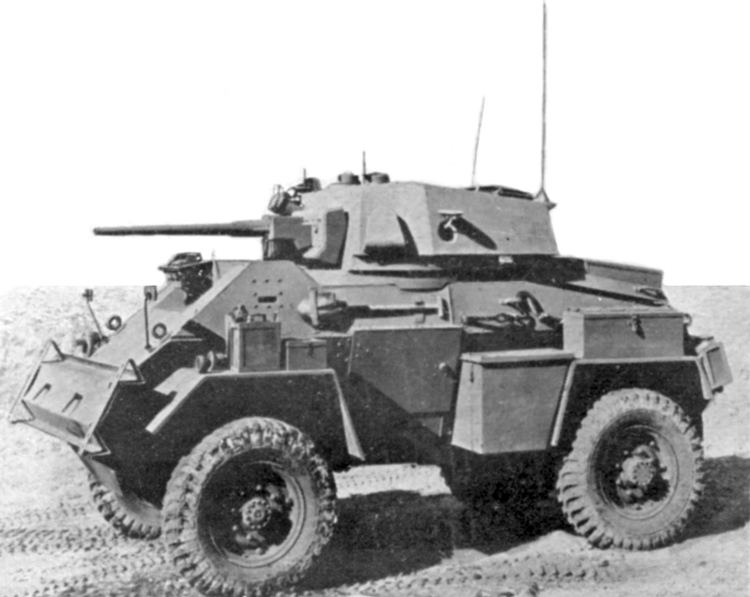Place of origin United Kingdom No. built 5,400 | Manufacturer Rootes Group (Karrier) Weight 5 t | |
 | ||
Used by United Kingdom and British India in Second World War, other nations post war. Wars Second World War
Portuguese-Indian War
Sino-Indian War | ||
The Humber Armoured Car was one of the most widely produced British armoured cars of the Second World War. It supplemented the Humber Light Reconnaissance Car and remained in service until the end of the war.
Contents
Development
Made by the Rootes Group, the Humber was essentially a combination of the Karrier KT 4 artillery tractor chassis and the armoured body of the Guy Armoured Car. The KT4 was already in production for the Indian Army, and Guy were having problems with the production levels required. The Karrier name was dropped to avoid confusion.
The first order for 500 was placed in 1940. The first Humbers were more or less identical to the Guy down to the faults in the armour, but this was later rectified. Production started in 1941.
The Mark III improved upon the Mark II by providing a three-man turret. Mark III production ended in 1942 after 1,650 had been built. With a possible replacement, the 2-pounder armed Coventry armoured car, on its way, the Mark IV was designed. This put the US 37 mm gun in the turret but at the cost of one crewman. The Coventry was not ordered as a replacement and so production of Mark IV continued, for a total of 2,000, despite its flaws.
Service history
The vehicle was used in the North African Campaign from late 1941 by the 11th Hussars and other units. It was also widely used in the European theatre by reconnaissance regiments of British and Canadian infantry divisions. A few vehicles were used for patrol duty along the Iran supply route. A British Indian Army armoured car regiment, partly equipped with Humbers, served in the reconquest of Burma. After the Second World War, the Humber was employed by Egypt in 1948–49 as well as by Burma, Ceylon, Cyprus, Denmark, India, Mexico, the Netherlands and Portugal.
The Humber armoured car was used in Burma Campaign by the 16th Light Cavalry, an Indian armoured car regiment, which formed part of Fourteenth Army troops.
After Independence, an Indian Army regiment, 63rd Cavalry was raised with Humber Mk IV armoured cars as one of its squadrons which was later hived off as an independent reconnaissance squadron and the integral squadron re-raised, the second time with Daimlers. The Humbers and Daimlers of the Indian Army formed the mounts of the President's Bodyguard and were deployed in the defense of Chushul at heights above 14,000 ft during the 1962 Indo-China War. The Humber was used against the Indian Army in 1948 by the 2nd and 4th Hyderabad Lancers, armoured car cavalry units of the Hyderabad State Forces, during Operation Polo.
Humber armoured cars were employed during the Indian invasion of Goa in December 1961. These vehicle equipped the four reconnaissance squadrons of the Portuguese garrison in Goa. The Portuguese Humbers engaged the invading Indian forces in the brief fights that occurred in the border villages of Doromagogo, Malinguém and Polem, and in the break through the Indian troops surrounding the Portuguese forces in Mapusa.
Survivors
Several static and operational cars are distributed through North America and Europe. There is a Mk I on display at The Tank Museum, Bovington.
